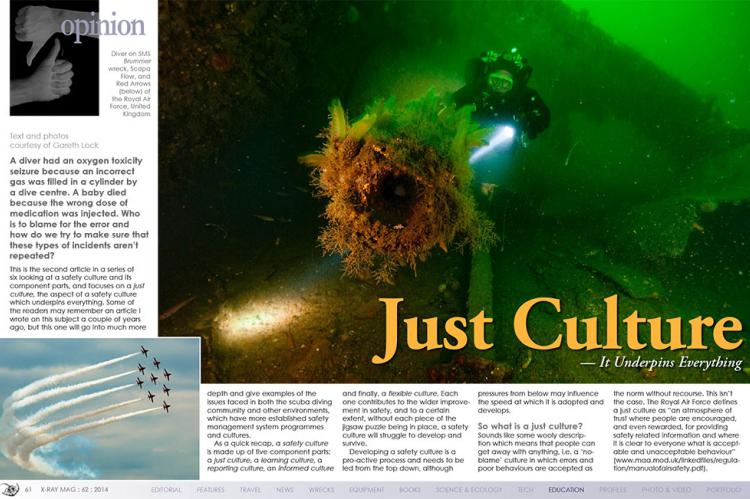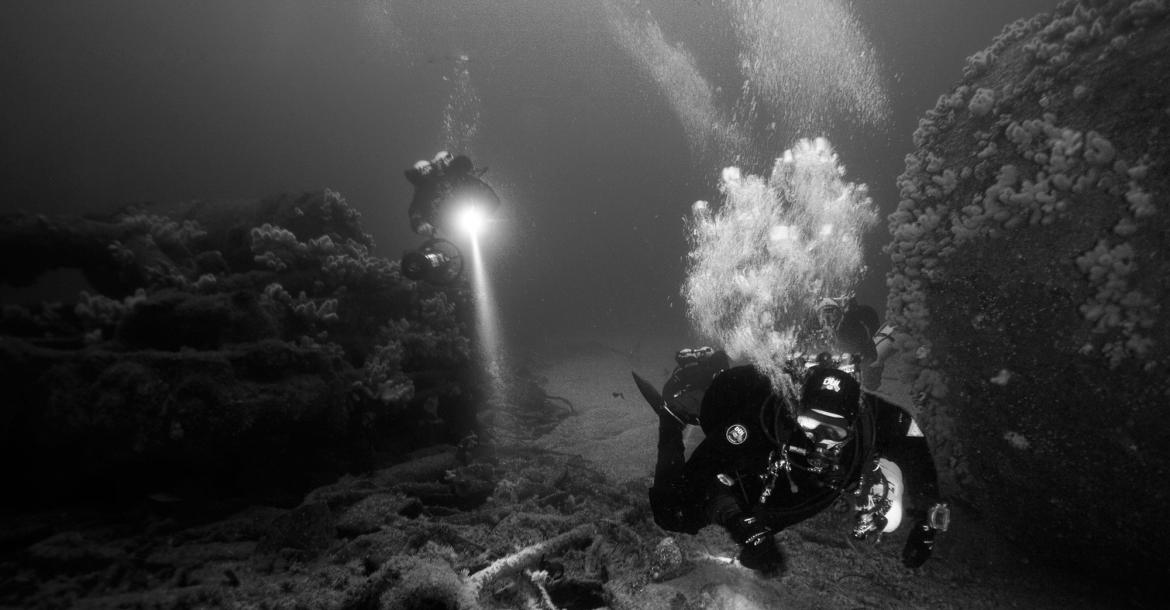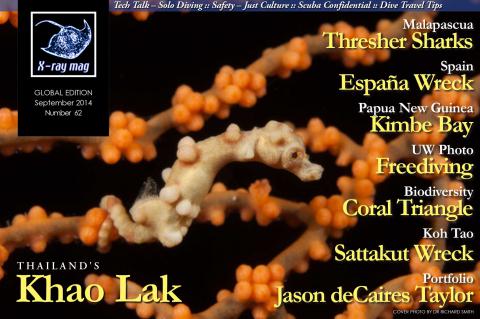Just Culture
A diver had an oxygen toxicity seizure because an incorrect gas was filled in a cylinder by a dive centre. A baby died because the wrong dose of medication was injected. Who is to blame for the error and how do we try to make sure that these types of incidents aren’t repeated?
Tags & Taxonomy
Some of the readers may remember an article I wrote on this subject a couple of years ago, but this one will go into much more depth and give examples of the issues faced in both the scuba diving community and other environments, which have more established safety management system programmes and cultures.
As a quick recap, a safety culture is made up of five component parts: a just culture, a learning culture, a reporting culture, an informed culture and finally, a flexible culture. Each one contributes to the wider improvement in safety, and to a certain extent, without each piece of the jigsaw puzzle being in place, a safety culture will struggle to develop and survive.
Developing a safety culture is a pro-active process and needs to be led from the top down, although pressures from below may influence the speed at which it is adopted and develops.
So what is a just culture?
Sounds like some wooly description which means that people can get away with anything, i.e. a ‘no-blame’ culture in which errors and poor behaviours are accepted as the norm without recourse. This isn’t the case. The Royal Air Force defines a just culture as “an atmosphere of trust where people are encouraged, and even rewarded, for providing safety related information and where it is clear to everyone what is acceptable and unacceptable behaviour” (www.maa.mod.uk/linkedfiles/regulation/manualofairsafety.pdf).
This document contains details of the safety management system in place within military aviation, including a slightly modified and more detailed version of the flow diagram (on the following page), which describes how errors, mistakes and violations are dealt with in terms of culpability and responsibility.
You may argue that an operational organisation which has millions of pounds of equipment and personnel to deal with and a very formal organisational structure within which to operate, has very little relevance to recreational diving.
I would argue there is considerable relevance, if only because the fact that there are regulations and a structure in place means it is easier to ‘draw the line in the sand’ as to what is right or wrong. However, as will be shown, the lack of clarity of right and wrong certainly makes it harder to determine how to deal with errors, mistakes and violations.
A just culture is a difficult concept to grasp for the majority of people because our society is developing into one in which we are always looking for someone to blame and that personal responsibility is diminishing. The following examples will hopefully put just culture into context and maybe adjust your perspective on ‘right and wrong’.
Exhibit A.
A nurse gave an eight-month baby which had been diagnosed with severe heart problems 1.4 grams of calcium chloride instead of the correct dose of 140 milligrams. It was the only serious medical mistake that she had ever made in her 24-year career. Overnight, she realised the mistake and reported it. Unfortunately, the baby died five days later.
There were a number of contributor factors: poor handwriting in the medical notes by the doctor; the staff were tired; there was a change of shift, so there was poor communication between staff; and then there was the general poor health of the baby. After the baby died, the nurse was escorted off the hospital site and then fired a few weeks later.
After a number of harrowing court cases in which she tried to defend her innocence, the nurse committed suicide. A nurse is only one part of a much wider system covering doctors, other nurses, shift pattern schedulers, and equipment designers and manufacturers.
Unfortunately, where to draw the line for accountability and responsibility is not clear, especially when a fatality is concerned.
Exhibit B.
Now consider this incident. A dive centre was running two courses from the same
(...)
Download the full article ⬇︎

Originally published
X-Ray Mag #62
Diving Thailand's Similan Islands at Khao Lak; Papua New Guinea's Kimbe Bay; Malapascua Island's Thresher Sharks in the Philippines; The Coral Triangle's Biodiversity; Spain's España Wreck; HTMS Sattakut Wreck at Koh Tao Island; Just Culture; Scuba Confidential; Diving Solo; Freediving for Underwater Photographers; Evie Dudas profile; Interview with artist Jason deCaires Taylor; Plus news and discoveries, equipment and training news, books and media, underwater photo and video equipment, shark tales, whale tales and much more...































